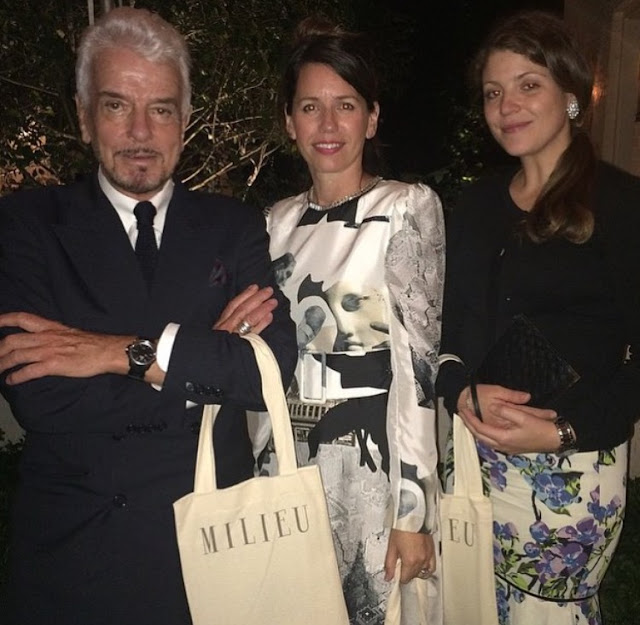Life/Style: Elegant Simplicity at Home
To be honest, I wasn't sure if I would find inspiration in Foley's book, which features the author's 18th-century Long Island farm house that has been decorated almost solely in atmospheric shades of white. After all, I'm an unabashed lover of color who treats white as a utilitarian hue. But leave it Foley to convince me that there is poetic beauty in a home awash almost solely in white. In Foley's hands, white breaths life into her home's interiors, creating a dreamy elegance that would otherwise be obscured by bold colors.
I might remain committed to color, but thanks to Foley, I now have great admiration for her compelling and inspiring point of view.
A Day at Château de Vaux-le-Vicomte
Ensconced in its elegant slipcase, this jewel of a book explores the history and the lore behind Vaux-le-Vicomte, the seventeenth-century French castle built by Nicolas Fouquet, finance minister to Louis XIV. The book's text is concise yet informative, while archival anecdotes are woven throughout the book to add further interest. But it's the book's enchanting photos that are the real draw here, giving readers a glimpse of Fouquet's magnificent creation.
And for those of you who enjoyed the book, Decadent Desserts: Recipes from Chateau Vaux-le-Vicomte
French Chic Living: Simple Ways to Make Your Home Beautiful
When this new book arrived on my doorstep, I knew not what to expect. But what a pleasant surprise this book turned out to be. Dampierre's latest book is a charming how-to guide on l'art de vivre. As someone who finds pleasure and comfort in all things domestic, I thoroughly enjoyed reading about the French way of keeping house, from freshening carpets with damp tea leaves to cleaning crystal decanters with a mixture of baking soda, water, and dried eggshells. There are medicinal recipes in here as well as non-medicinal ones, including Rosehip Jelly and Kir Royale. And those of you with green thumbs will find plenty of tips on gardening and flower-arranging, too.
This is a book you'll likely consult well into the future.
Palm Beach Chic
There might be a number of books about the Palm Beach lifestyle, but Palm Beach Chic is one of the most interesting books on the subject to have been published in recent years. In her book, Rudick, who moved to Palm Beach as a child, profiles the homes of such Palm Beach stalwarts as Kathy and Billy Rayner, Terry Allen Kramer, and Pauline Pitt. For a book of this nature, it's all about the photos of enviable houses, and Rudick has done a nice job of featuring a stylish mix of them. Some are traditional, others are lavish, and a few are downright quirky. But what I might have enjoyed even more were the historical tidbits about Palm Beach society that Rudick relayed throughout the book's text. If you enjoy connecting the dots between the grandees of the past and present, then this book is especially for you.
Carrier and Company: Positively Chic Interiors
After having seen numerous magazine articles profiling the design work of Carrier and Miller, I was pleased to be treated to a generous helping of it in this recently published monograph. Simply put, the book was a pleasure to peruse. The featured interiors are, yes, positively chic, but they also display a relaxed elegance, too. In a Carrier and Company-designed interior, everything- furniture, fabric, art- appears to feel at ease in their surroundings. This might be why I felt a sense of calm and contentment as I made my way through the book.
Something else that is positively chic? The book's glossy red endpapers.

Mrs. Howard, Room by Room
Designer Phoebe Howard returns with Room by Room, her follow-up to her successful debut monograph, The Joy of Decorating. Organized by rooms, the book is chock-full of Howard's tailored, well-mannered style. There are libraries, living rooms, and dining rooms galore. It was the photos of a few Howard-decorated Manhattan apartments that was a real discovery for me. Modern and slick, these apartments show that although her heart might lie in the traditional style, Howard seems comfortable in the contemporary idiom, too.
And last, but certainly not least...Mark Hampton On Decorating


















































